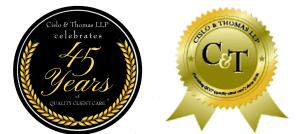The patent law encourages patent owners to mark their products with any patent numbers covering those products. 35 USC § 287. The law also prohibits using such markings on non-patented products, which is called “false marking,” under 35 USC § 292. The law allows a fine of up to $500 for every such offense, which is split 50/50 between the plaintiff and the government. As a result, several law firms are now making a business for themselves by suing patent owners for false marking.
These recent suits usually cover two types of marking. First, those markings using the broad language “May be be covered by one or more of the following patents,” when not all the patents listed apply to the marked product. Second, those suits alleging that markings listing expired patents constitutes false marking of an unpatented product.
The suits are further alleging that every falsely-marked piece sold is a separate offense. The plaintiffs argue that otherwise there would be no deterrent, as the offender would simply pay a maximum of $500 for an offending product, no matter how many are sold.
These legal theories have yet to be tested in the Federal Circuit. Nevertheless, a company would be wise to check its product markings to avoid these types of suits.
Just before this newsletter went to press, summary judgment was granted for the defendant in one of those cases (Pequignot v. Solo Cup Co., 1:07cv897 (LMB/TCB) (E.D. Va.) (defendant failed to change its cup lid molds to remove patent numbers after patents expired). The judge commented at oral argument that the ruling was to get the case teed up for the Federal Circuit. One of the key issues on appeal is likely to be the level of intent necessary for a finding of “purposeful deception” required by the statute.



